Showing Spotlights 1897 - 1904 of 2785 in category All (newest first):
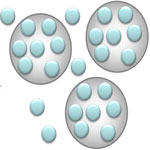 With all the buzz that is being created by portable e-book readers, it's worth taking a look at one of the advanced display technologies - also often referred to as electronic paper - that make these devices happen. Unlike a conventional flat panel display, which uses a power-consuming backlight to illuminate its pixels, electronic paper reflects light like ordinary paper and is capable of holding text and images indefinitely without drawing electricity, while allowing the image to be changed later. Because they can be produced on thin, flexible substrates an due to their paper-like appearance, electrophoretic displays are considered prime examples of the electronic paper category. Electrophoretic displays already are in commercial use, for instance in the Kindle or in the Sony Reader, but so far the displays are mostly black and white. There are still cost and quality issues with color displays. New work by researchers in South Korea shows that organic ink nanoparticles could provide an improved electronic ink fabrication technology resulting in e-paper with high brightness, good contrast ratio, and lower manufacturing cost.
With all the buzz that is being created by portable e-book readers, it's worth taking a look at one of the advanced display technologies - also often referred to as electronic paper - that make these devices happen. Unlike a conventional flat panel display, which uses a power-consuming backlight to illuminate its pixels, electronic paper reflects light like ordinary paper and is capable of holding text and images indefinitely without drawing electricity, while allowing the image to be changed later. Because they can be produced on thin, flexible substrates an due to their paper-like appearance, electrophoretic displays are considered prime examples of the electronic paper category. Electrophoretic displays already are in commercial use, for instance in the Kindle or in the Sony Reader, but so far the displays are mostly black and white. There are still cost and quality issues with color displays. New work by researchers in South Korea shows that organic ink nanoparticles could provide an improved electronic ink fabrication technology resulting in e-paper with high brightness, good contrast ratio, and lower manufacturing cost.
Jan 27th, 2010
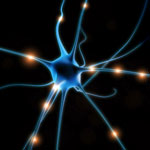 Scientists have great expectations that nanotechnologies will bring them closer to the goal of creating computer systems that can simulate and emulate the brain's abilities for sensation, perception, action, interaction and cognition while rivaling its low power consumption and compact size. DARPA for instance has a program called SyNAPSE that is trying to develop electronic neuromorphic machine technology that scales to biological levels. Started in late 2008 and funded with $4.9 million, the goal of the initial phase of the SyNAPSE project is to 'develop nanometer scale electronic synaptic components capable of adapting the connection strength between two neurons in a manner analogous to that seen in biological systems, as well as, simulate the utility of these synaptic components in core microcircuits that support the overall system architecture.' Independent from this military-inspired research, nanotechnology researchers in France have developed a hybrid nanoparticle-organic transistor that can mimic the main functionalities of a synapse. This organic transistor, based on pentacene and gold nanoparticles and termed NOMFET (Nanoparticle Organic Memory Field-Effect Transistor), has opened the way to new generations of neuro-inspired computers, capable of responding in a manner similar to the nervous system.
Scientists have great expectations that nanotechnologies will bring them closer to the goal of creating computer systems that can simulate and emulate the brain's abilities for sensation, perception, action, interaction and cognition while rivaling its low power consumption and compact size. DARPA for instance has a program called SyNAPSE that is trying to develop electronic neuromorphic machine technology that scales to biological levels. Started in late 2008 and funded with $4.9 million, the goal of the initial phase of the SyNAPSE project is to 'develop nanometer scale electronic synaptic components capable of adapting the connection strength between two neurons in a manner analogous to that seen in biological systems, as well as, simulate the utility of these synaptic components in core microcircuits that support the overall system architecture.' Independent from this military-inspired research, nanotechnology researchers in France have developed a hybrid nanoparticle-organic transistor that can mimic the main functionalities of a synapse. This organic transistor, based on pentacene and gold nanoparticles and termed NOMFET (Nanoparticle Organic Memory Field-Effect Transistor), has opened the way to new generations of neuro-inspired computers, capable of responding in a manner similar to the nervous system.
Jan 25th, 2010
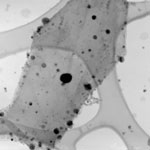 Carbon-supported catalysts are widely used in many applications. For example, platinum nanoparticles supported on bulk carbon frameworks are used as fuel cell electrodes. The obvious challenge is to have a large area of carbon surface so that the catalyst particles can be dispersed without any aggregation. Graphene with its 2D nanostructure provides a large surface area (theoretically, the surface area of graphene is about 2600 square meters per gram) to anchor catalyst particles. Scientists have now succeeded in dispersing two different types of nanoparticles - silver and titanium dioxide - on a reduced graphene oxide at different sites without any aggregation.
Carbon-supported catalysts are widely used in many applications. For example, platinum nanoparticles supported on bulk carbon frameworks are used as fuel cell electrodes. The obvious challenge is to have a large area of carbon surface so that the catalyst particles can be dispersed without any aggregation. Graphene with its 2D nanostructure provides a large surface area (theoretically, the surface area of graphene is about 2600 square meters per gram) to anchor catalyst particles. Scientists have now succeeded in dispersing two different types of nanoparticles - silver and titanium dioxide - on a reduced graphene oxide at different sites without any aggregation.
Jan 21st, 2010
 In a nanotechnology risk assessment study published last year, researchers concluded that the costs associated with nanomaterial risk assessment in the United States alone could range anywhere from $249 million to $1.18 billion and might take decades to complete at current levels of investment in nano-hazard testing. While research in quantitative risk characterization of nanomaterials is crucially important, and no one advocates abandoning this approach, scientists and policy makers must face the reality that many of these knowledge gaps cannot be expected to be closed for many years to come - and decision making will need to continue under conditions of uncertainty. At the same time, current chemical-based research efforts are mainly directed at establishing toxicological and ecotoxicological and exposure data for nanomaterials, with comparatively little research undertaken on the tools or approaches that may facilitate near-term decisions. A group of scientists suggests that this situation requires a significant research program in a fundamental area of timely, yet informed decision making regarding the potential risks of nanomaterials. They highlight some of these issues as well as outline some of the currently available tools and approaches for decision making regarding the potential risks of nanomaterials.
In a nanotechnology risk assessment study published last year, researchers concluded that the costs associated with nanomaterial risk assessment in the United States alone could range anywhere from $249 million to $1.18 billion and might take decades to complete at current levels of investment in nano-hazard testing. While research in quantitative risk characterization of nanomaterials is crucially important, and no one advocates abandoning this approach, scientists and policy makers must face the reality that many of these knowledge gaps cannot be expected to be closed for many years to come - and decision making will need to continue under conditions of uncertainty. At the same time, current chemical-based research efforts are mainly directed at establishing toxicological and ecotoxicological and exposure data for nanomaterials, with comparatively little research undertaken on the tools or approaches that may facilitate near-term decisions. A group of scientists suggests that this situation requires a significant research program in a fundamental area of timely, yet informed decision making regarding the potential risks of nanomaterials. They highlight some of these issues as well as outline some of the currently available tools and approaches for decision making regarding the potential risks of nanomaterials.
Jan 20th, 2010
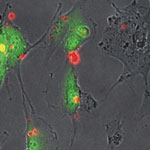 Oncogenes are genes that are associated with the development of cancer - when mutated or expressed at high levels, they can help turn a normal cell into a tumor cell. Promising new chemotherapeutic strategies have therefore focused on suppressing oncogenes. One such approach is based on RNA interference (RNAi), a technique wherein small double-stranded RNA molecules can sequence-specifically inhibit the expression of targeted oncogenes. The idea here is that with the help of small interfering RNA (siRNA), key oncogenes that modulate signaling pathways and thereby regulate the behavior of malignant tumor cells can be manipulated. To harness the full potential of this approach, the prime requirements are to deliver the siRNA molecules with high selectivity and efficiency into tumor cells and to monitor both siRNA delivery and the resulting knockdown effects at the single-cell level.
Oncogenes are genes that are associated with the development of cancer - when mutated or expressed at high levels, they can help turn a normal cell into a tumor cell. Promising new chemotherapeutic strategies have therefore focused on suppressing oncogenes. One such approach is based on RNA interference (RNAi), a technique wherein small double-stranded RNA molecules can sequence-specifically inhibit the expression of targeted oncogenes. The idea here is that with the help of small interfering RNA (siRNA), key oncogenes that modulate signaling pathways and thereby regulate the behavior of malignant tumor cells can be manipulated. To harness the full potential of this approach, the prime requirements are to deliver the siRNA molecules with high selectivity and efficiency into tumor cells and to monitor both siRNA delivery and the resulting knockdown effects at the single-cell level.
Jan 19th, 2010
 In characterizing materials, especially live biological specimen such as cells, it is important not only to be able to explore the surface but also any subsurface structures and properties - without damaging or destroying the sample and for hard and soft materials alike. For example, many synthesized nanoparticles can readily get inside a cell. Therefore studying the cell surface, while useful, can provide little or no knowledge about the particles hidden in the interior of the cell. Another example is the detection of nanoscale defects in nanofabricated structures such as those made by electron beam lithography; or the detection of embedded cracks and voids in nanocomposite materials. Researchers have now shown that an atomic force microscope can obtain a range of surface and subsurface information by making use of the nonlinear nanomechanical coupling between the probe and the sample.
In characterizing materials, especially live biological specimen such as cells, it is important not only to be able to explore the surface but also any subsurface structures and properties - without damaging or destroying the sample and for hard and soft materials alike. For example, many synthesized nanoparticles can readily get inside a cell. Therefore studying the cell surface, while useful, can provide little or no knowledge about the particles hidden in the interior of the cell. Another example is the detection of nanoscale defects in nanofabricated structures such as those made by electron beam lithography; or the detection of embedded cracks and voids in nanocomposite materials. Researchers have now shown that an atomic force microscope can obtain a range of surface and subsurface information by making use of the nonlinear nanomechanical coupling between the probe and the sample.
Jan 18th, 2010
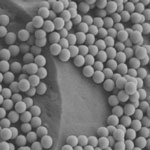 One important aspect of clothing comfort is thermo-physiological comfort. By adjusting the transport of heat and moisture through a fabric, thermo-physiological comfort can keep people comfortable with regard to temperature and moisture. Some hydrophobic fabrics have deficiencies in this area. Take wool. Wool is one of the best insulating fibers known to man - while at the same time being light and soft. The quality that distinguishes wool fibers is the presence of a fatty, water-repellent outer layer that surrounds each fiber. Therefore, the water absorption and sweat venting properties of wool fiber are not very good, which affects the wearing comfort of wool textiles. The wool hydrophobic surface layer is also a barrier to anticrease finishing, dyeing, and grafting of hydrophilic agents, which is an issue in trying to add smart functionalities to wool fabrics.
Researchers have now developed a simple method for fabricating environmentally stable superhydrophilic wool fabrics. They applied silica sols to natural wool fibers to form an ultrathin layer on the surface of the fibers.
One important aspect of clothing comfort is thermo-physiological comfort. By adjusting the transport of heat and moisture through a fabric, thermo-physiological comfort can keep people comfortable with regard to temperature and moisture. Some hydrophobic fabrics have deficiencies in this area. Take wool. Wool is one of the best insulating fibers known to man - while at the same time being light and soft. The quality that distinguishes wool fibers is the presence of a fatty, water-repellent outer layer that surrounds each fiber. Therefore, the water absorption and sweat venting properties of wool fiber are not very good, which affects the wearing comfort of wool textiles. The wool hydrophobic surface layer is also a barrier to anticrease finishing, dyeing, and grafting of hydrophilic agents, which is an issue in trying to add smart functionalities to wool fabrics.
Researchers have now developed a simple method for fabricating environmentally stable superhydrophilic wool fabrics. They applied silica sols to natural wool fibers to form an ultrathin layer on the surface of the fibers.
Jan 15th, 2010
 Experts and the public generally differ in their perceptions of technology risk. While this might be due to social and demographic factors, it is generally assumed by scientists who conduct risk research that experts' risk assessments are based more strongly on actual or perceived knowledge about a technology than lay people's risk assessments. Nevertheless, whether the risks are real or not, the public perception of an emerging technology will have a major influence on the acceptance of this technology and its commercial success. If the public perception turns negative, potentially beneficial technologies will be severely constrained as is the case for instance with gene technology. It is not surprising that a new study found that, in general, nanoscientists are more optimistic than the public about the potential benefits of nanotechnology. What is surprising though, is that, for some issues related to the environmental and long-term health impacts of nanotechnology, nanoscientists seem to be significantly more concerned than the public. Arguing that risk communication on nanotechnologies requires target-specific approaches, a group of researchers in Germany advocate the development of communication strategies that help people to comprehend nanotechnology, to differentiate between the fields of application and to gain an understanding of the cause and effect chains.
Experts and the public generally differ in their perceptions of technology risk. While this might be due to social and demographic factors, it is generally assumed by scientists who conduct risk research that experts' risk assessments are based more strongly on actual or perceived knowledge about a technology than lay people's risk assessments. Nevertheless, whether the risks are real or not, the public perception of an emerging technology will have a major influence on the acceptance of this technology and its commercial success. If the public perception turns negative, potentially beneficial technologies will be severely constrained as is the case for instance with gene technology. It is not surprising that a new study found that, in general, nanoscientists are more optimistic than the public about the potential benefits of nanotechnology. What is surprising though, is that, for some issues related to the environmental and long-term health impacts of nanotechnology, nanoscientists seem to be significantly more concerned than the public. Arguing that risk communication on nanotechnologies requires target-specific approaches, a group of researchers in Germany advocate the development of communication strategies that help people to comprehend nanotechnology, to differentiate between the fields of application and to gain an understanding of the cause and effect chains.
Jan 14th, 2010
 With all the buzz that is being created by portable e-book readers, it's worth taking a look at one of the advanced display technologies - also often referred to as electronic paper - that make these devices happen. Unlike a conventional flat panel display, which uses a power-consuming backlight to illuminate its pixels, electronic paper reflects light like ordinary paper and is capable of holding text and images indefinitely without drawing electricity, while allowing the image to be changed later. Because they can be produced on thin, flexible substrates an due to their paper-like appearance, electrophoretic displays are considered prime examples of the electronic paper category. Electrophoretic displays already are in commercial use, for instance in the Kindle or in the Sony Reader, but so far the displays are mostly black and white. There are still cost and quality issues with color displays. New work by researchers in South Korea shows that organic ink nanoparticles could provide an improved electronic ink fabrication technology resulting in e-paper with high brightness, good contrast ratio, and lower manufacturing cost.
With all the buzz that is being created by portable e-book readers, it's worth taking a look at one of the advanced display technologies - also often referred to as electronic paper - that make these devices happen. Unlike a conventional flat panel display, which uses a power-consuming backlight to illuminate its pixels, electronic paper reflects light like ordinary paper and is capable of holding text and images indefinitely without drawing electricity, while allowing the image to be changed later. Because they can be produced on thin, flexible substrates an due to their paper-like appearance, electrophoretic displays are considered prime examples of the electronic paper category. Electrophoretic displays already are in commercial use, for instance in the Kindle or in the Sony Reader, but so far the displays are mostly black and white. There are still cost and quality issues with color displays. New work by researchers in South Korea shows that organic ink nanoparticles could provide an improved electronic ink fabrication technology resulting in e-paper with high brightness, good contrast ratio, and lower manufacturing cost. 
 Subscribe to our Nanotechnology Spotlight feed
Subscribe to our Nanotechnology Spotlight feed





